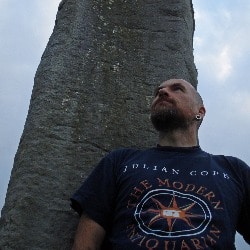Although his name could fit in easily to the early 1980’s Hip-Hop Scene, Jerzy Nomarski (or ‘George’) was actually a Polish physicist with an interest in optical theory. Born in 1919, he eventually became a member of the Polish Resistance fighting in the Second World War. He was captured by enemy forces and held as a prisoner of war until 1945. He finished his education after the war and went on to establish the Laboratoire de Microscopie Optique de L’Institut d’Optique in 1950- he later became a Professor of Microscopy and Head of Department.
See through the thickness
Differential Interference Contrast (DIC) Microscopy was invented by Nomarski in 1952. This technique was an improvement on Phase Contrast Microscopy (you can learn about Phase Contrast in this article). Phase contrast utilises various filters and condensers, which allow for the detailed visualisation of living cells and the intracellular bodies within. DIC improves on this by allowing a greater depth of focus meaning you can visualise thicker specimens/cells.
Furthermore, DIC also utilises a special type of optical prism (see below) to produce a much improved pseudo-3D shadow image of living cells and their components.
Enter stage left…
This is where we invite an English chemist and physicist onto the stage! William Hyde Wollaston (1766-1828) developed the ‘Wollaston Prism’ (as well as many other discoveries and developments including the discovery of both Palladium and Rhodium!).
The joining of crystals
The Wollaston Prism splits random or unpolarized light into two linear polarized beams. The composition of the prism determines the angle of divergence of the beams as well as the wavelength of the polarized light. The prism consists of two separate calcite crystals which are cemented together at a specific angle, which in turn determines the angle of divergence.
Within you, outwith you
The difference between the Wollaston Prism and a Nomarski Prism is the orientation of the two crystals which are used to form the complete prism. In the Wollaston version, the orientation/angle causes the light beam splitting within the actual prism. However, the structure of the Nomarski Prism is such that the light is split outwith the actual prism. As the focal point is outwith the actual physical body of the prism, this allows greater flexibility in the focussing of the beam.
Playing with the speed of light
Now imagine these two beams emerging from the Prism and interacting with a specimen. The beams will interact with different parts/thicknesses of a specimen and this will affect the actual transit time of the light. In other words, this will slow one or other of the beams down as they emerge from the specimen. This change in velocity equates to a phase shift occurring between the split beams.
Phase becomes amplitude
After they have emerged from the specimen, they are once again brought back together using another prism. The light waves interfere with each other in the prism resulting in elliptically polarized light. This light then travels through an analyser which transforms the shift in phase into a change in amplitude. If you have read my previous article on Phase Contrast Microscopy (which is here!) then you’ll know that the human eye cannot detect changes in phase. However, changes in amplitude are detected and are represented as changes in intensity.
Stick one on your microscope!
If you already have a brightfield microscope and you would like to use DIC, then, good news- you can fit prisms to most microscopes. This technique can also be used in conjunction with fluorescence microscopy.
Please share your experiences and thoughts on DIC- has it proved useful in your research?






